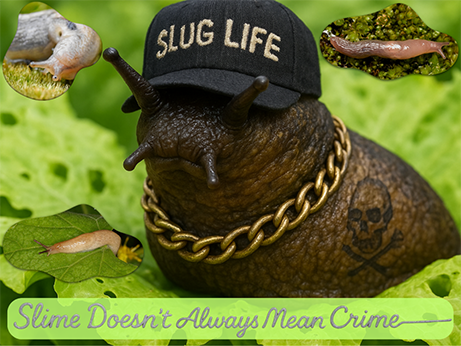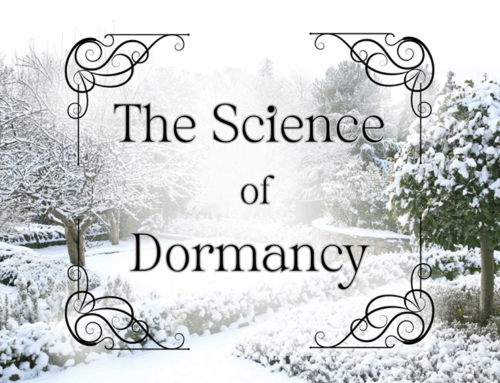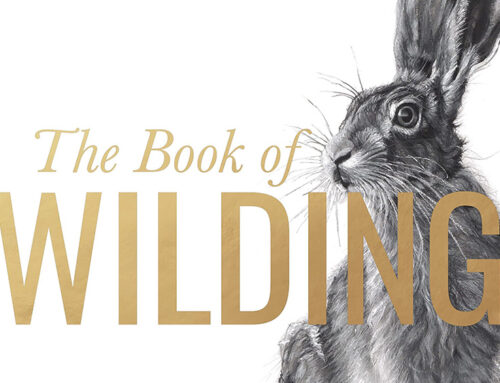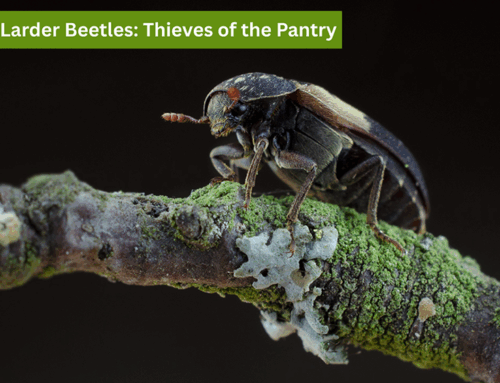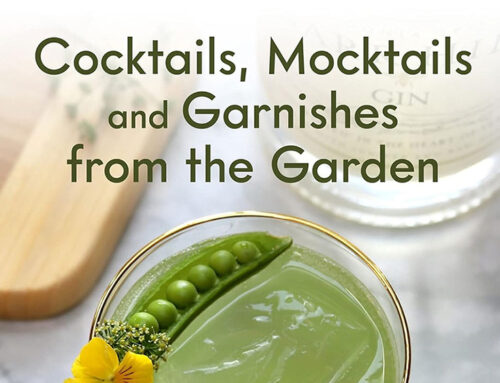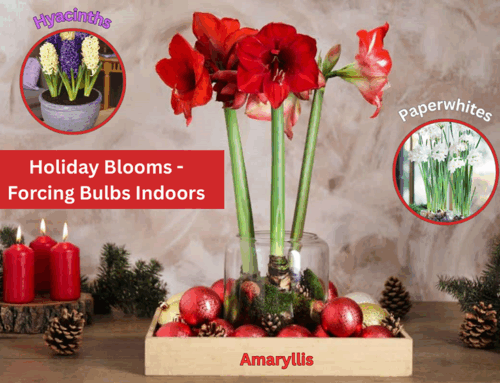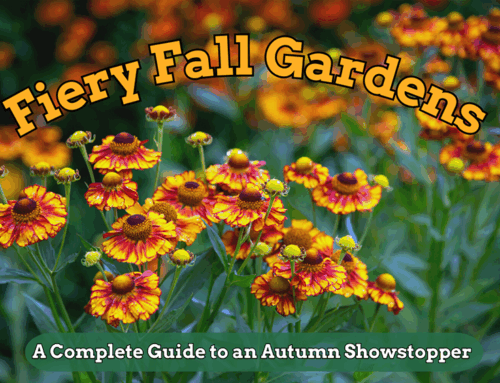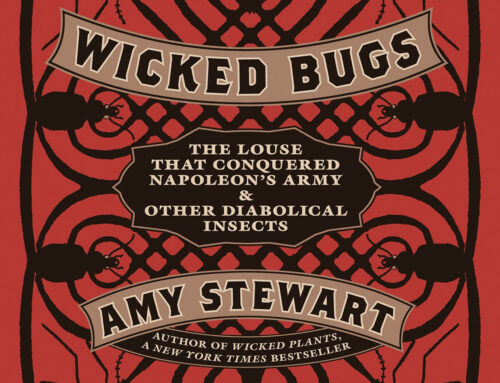Slug Life: Slime Doesn’t Always Mean Crime
by Brett Kerley
When you find a slime trail glistening across your lettuce leaves or see neat holes gnawed into your hostas, your first suspect is likely a slug. For many gardeners in the Edmonton region, slugs are among the most frustrating garden pests. But as with most things in nature, slugs play a more complex role in the ecosystem than we often give them credit for. Could these slimy mollusks be more than just garden villains?
Meet the Slugs of Edmonton
In the Edmonton area, the most common slugs found in home gardens are introduced species, notably the Grey Field Slug or Milky Slug (Deroceras reticulatum) Chestnut Slug (Deroceras invadens) and the Lehmann’s Slug (Deroceras laeve). Occasionally, gardeners may encounter the Arion slug species, such as the European Red Slug (Arion rufus), although they are less prevalent in our region than in coastal or warmer areas.
Grey Field Or Milky Slug (Deroceras reticulatum)
- Appearance: Grey to pale brown with a distinctive mottled or reticulated pattern.
- Size: Up to 5 cm (2 inches) when fully grown.
- Habitat: Moist gardens, lawns, and agricultural fields.
- Behavior: Voracious feeder, active especially at night and during cool, wet weather.
- Diet: Wide-ranging herbivore, known to attack vegetables, flowers, seedlings, and even fungi.
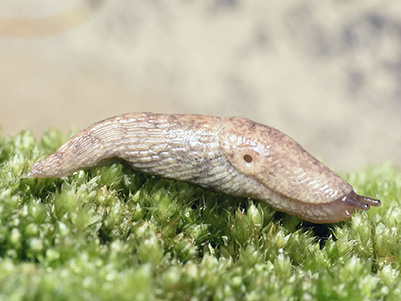
Chestnut Slug (Deroceras invadens)
- Appearance: Pale brown, grey, or yellowish, often translucent. Short, with the mantle covering the front half of the body.
- Size: Typically under 3 cm (1.2 inches).
- Habitat: Gardens, greenhouses, compost heaps, under mulch and debris. Prefers cool, damp environments, active at night or during wet weather.
- Diet: Tender vegetables (lettuce, spinach, beans, strawberries). Seedlings and soft plant tissue. Decaying leaves and organic matter. Sometimes it feeds on fungi or algae.
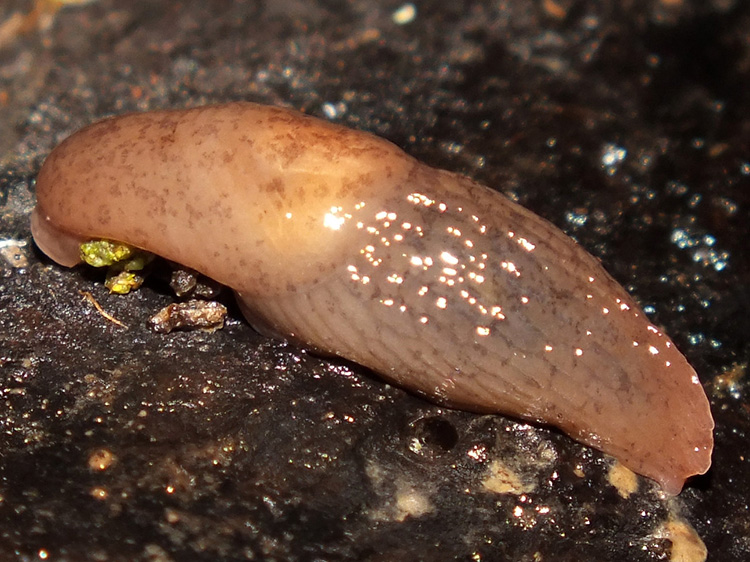
Lehmann’s Slug (Deroceras laeve)
- Appearance: Smaller, smooth, often chocolate brown to grey; lacks the patterning of the Grey Field Slug.
- Size: Typically under 3 cm (1.2 inches).
- Habitat: Prefers damp leaf litter, compost piles, and under mulch.
- Diet: More detritivorous (feeds on decaying matter), though will eat soft plant tissue if available.
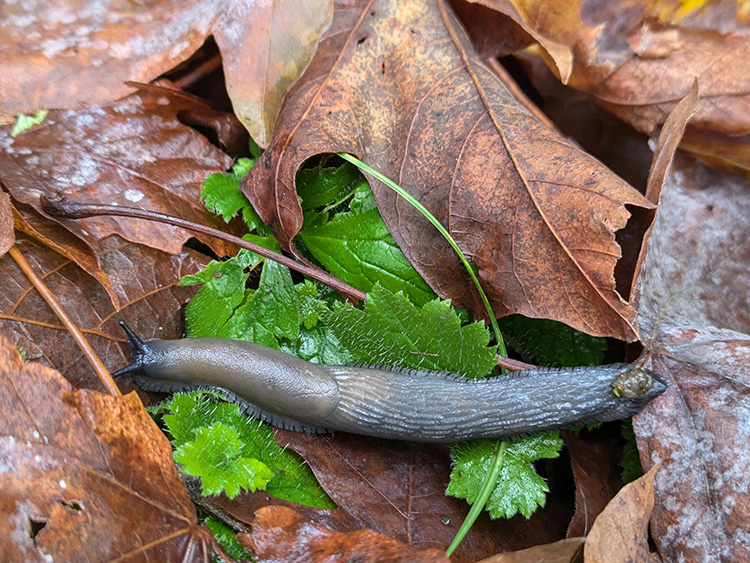
The Bad News
Slugs are notorious for their appetite for tender garden plants. Edmonton gardeners often report damage to:
- Lettuce, spinach, and other leafy greens.
- Hostas, delphiniums, and marigolds.
- Young seedlings and transplants.
They tend to be most problematic during cool, wet springs and summers, which we experience regularly in the Edmonton area, especially in years with heavy June rains.
Slugs can also act as vectors for plant pathogens by transporting fungal spores and bacteria on their slime trails.
The Good News
While their feeding habits are undeniably destructive, slugs also play essential roles in the garden ecosystem:
- Decomposers: Many slugs, especially smaller species, feed on decomposing plant material, fungi, and even carrion, helping break down organic matter and recycle nutrients back into the soil.
- Soil Aeration: Their burrowing and slime trails help move organic material and create small channels in the soil.
- Food Web Participants: Slugs are an important food source for a variety of creatures, including:
- Ground beetles
- Songbirds (such as thrushes and robins)
- Ducks
- Toads and frogs (though more limited in our drier prairie setting)
- Small mammals (including shrews and voles)
Thus, while they may be a nuisance to the gardener, slugs are a key player in the backyard food chain.
Slug Eggs: What to Look For
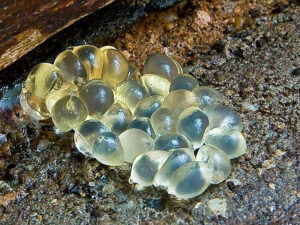
slug eggs
Slug eggs are usually small, round, and translucent to milky-white, resembling tiny pearls or jelly-like beads. They are typically laid in clusters of 10 to 100 in damp, sheltered places such as under mulch, leaf litter, boards, rocks, or the edges of garden beds. Each egg is about 3–6 mm (⅛–¼ inch) in diameter and may look slightly shiny or gelatinous. When fresh, they are clear, but as they age, they often turn cloudy, opaque, or even yellowish. Because they blend so well with soil and debris, they can be difficult to spot until you’re actively inspecting hidden, moist spots in your garden. Recognising these egg clusters is key to controlling slug populations before they hatch and begin feeding on tender plants.
Once you’ve spotted slug eggs, the easiest method of control is to simply crush them with your fingers, a stick, or garden tool, breaking the jelly-like casings so they dry out. If you’d rather not squish them, you can scoop clusters into a bucket and dispose of them in the trash. Avoid composting, as the eggs may still hatch if conditions are moist. Some gardeners pour hot, soapy water over collected eggs to ensure they don’t survive. Regularly checking under mulch, boards, pots, and shady corners of the garden will help you intercept new clusters before they hatch. By removing eggs consistently, you’ll significantly cut down on the next generation of hungry slugs.
Slug Management: Strike a Natural Balance
Organic Deterrents & Smart Tactics
- Handpicking
Scout your garden at dusk or after a rainstorm, and remove slugs by hand—wear gloves and drop them into soapy water or let your ducks and chickens snack on them. - “Slug Pubs” (Beer Traps)
Place shallow containers filled with beer (or old orange juice) in your beds. Slugs are lured in, fall in, and drown. Check and replenish these nightly. - DIY Shelters
Lay down damp tiles, wood scraps, or bricks as hiding spots. Slugs gather underneath during the day, making them easy to find and remove. - Diatomaceous Earth (DE)
Sprinkle DE around plants to create a sharp barrier. When dry, it repels slugs—though it may irritate lungs if inhaled and can harm beneficial insects if overused. Use as a spot treatment on non-blooming plants. Apache Seed sells larger bags for a good price! - Barrier Powders (Coffee Grounds, Eggshells, Wood Ash, Seashells)
These abrasive materials can deter slugs and snails, though effectiveness varies. Coffee grounds may offer additional impact due to residual caffeine levels. Used coffee grounds offer mild deterrence, mainly due to their texture and any leftover caffeine. A 1–2% caffeine solution can be lethal to slugs, but brewed grounds contain less and are less potent. Eggshells Myth: Though often touted as slug deterrents, eggshells are largely ineffective—slugs can glide over sharp textures with ease. - Copper Tape
Wrap raised beds or potted plants with copper tape. Slugs contacting the copper may receive a mild shock, which deters them. Note: slugs might bypass the barrier via overhanging leaves. - Nematodes (e.g. Phasmarhabditis hermaphrodita)
These microscopic roundworms infect and kill slugs in 6–10 days. Known commercially as Nemaslug, they’re effective—even if slower than chemical alternatives. - Bran (Wheat or Corn)
Scatter bran around vulnerable plants. Slugs ingest it and become desiccated from the inside—nature’s gentle—but effective—desiccant. Safe for soil and crops, the bonus is that it’s cheap to buy from Bulk Barn. - Trap Crops
Plant tender greens (like mustard, kale, cabbage) away from main beds to lure slugs. Later, you can target those areas for control. - Companion Planting
Grow plants around sensitive crops that slugs like to avoid. Try alliums (garlic, onions, chives), lavender, rosemary, wormwood, and anise to naturally ward off slugs. - Mulch Selection & Maintenance
Avoid loose straw or leaf mulch that create slug hideouts. Opt for more compact, less hospitable options like composted leaf mold. - Watering Strategy
Water in the early morning—especially with drip systems—so soil dries by evening and becomes less attractive to slugs. Avoid overhead watering and evening irrigation. - Good Garden Hygiene
Clear debris and potential slug shelters in fall. Hot-compost old vegetation to kill overwintering slugs and eggs. - Attract Natural Predators
Create habitat for slug predators—install bird feeders and toad homes, add water features, and plant bird-friendly flora like sunflowers. - Avoid Harmful Pesticides
Skip metaldehyde slug pellets—they harm wildlife and disrupt your garden’s ecosystem. Even iron-phosphate products can hurt earthworms, so organic alternatives are safer.
Fun and Slimy Facts about Slugs
- They have two pairs of tentacles: The upper pair detect light (eyes) and can retract if threatened, while the lower pair detect smells and tastes.
- Slugs produce mucus for multiple purposes: Locomotion, moisture retention, predator deterrence, and even courtship displays. So yes they have a foot that causes this!
- They’re hermaphrodites: Slugs possess both male and female reproductive organs, allowing any two mature slugs to mate.
- They leave ‘messages’ in slime trails: Some slugs can follow the trails of others to food sources or mates.
- Some slugs can self-amputate their tail ends: This is a defense mechanism to distract predators, not unlike a lizard’s tail.
- They have a tongue: It is tooth covered, used as a rasp for grating food.
Friend or Foe? You Decide!
In the end, whether you consider slugs friend or foe depends on your gardening goals and tolerance levels. Slugs are both garden villains and ecosystem heroes. They remind us that the garden is not only for us but is also a bustling, slimy, crawling community of creatures, each playing a role in the web of life.
By understanding slugs better, we can move beyond the “war on pests” mentality and towards a more ecological approach to gardening—where even the lowly slug has its place.
Until next slime… keep your gardens balanced and your minds open.

